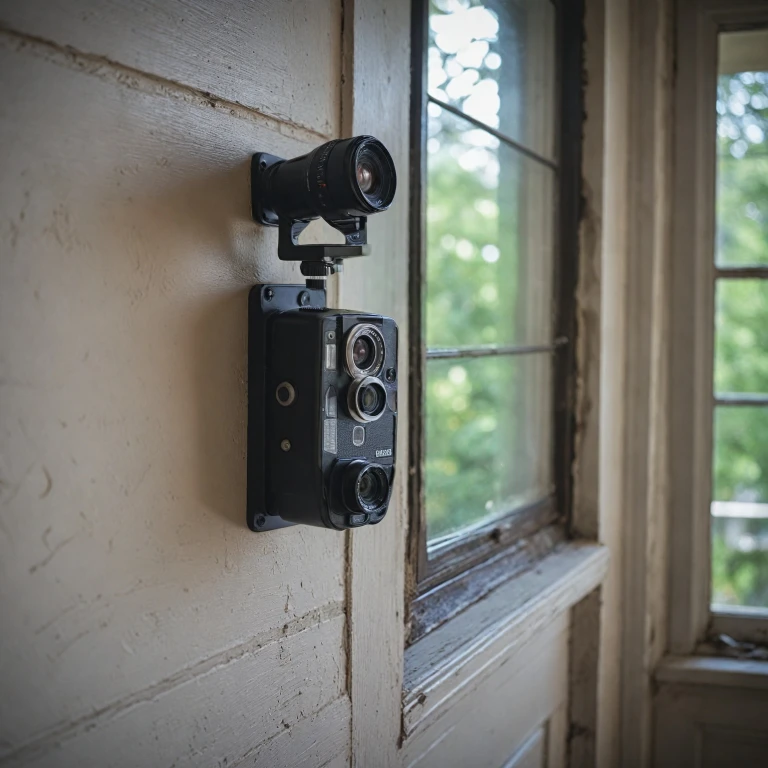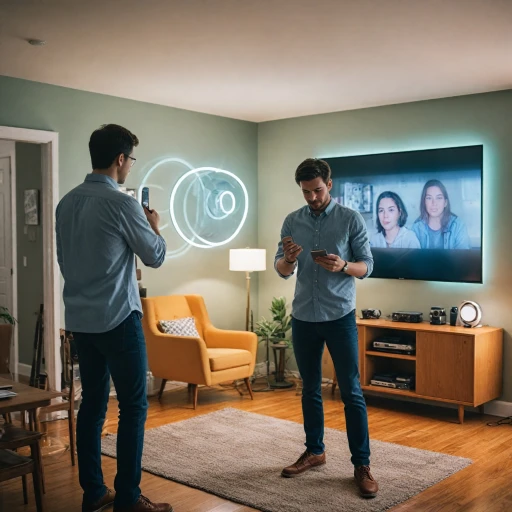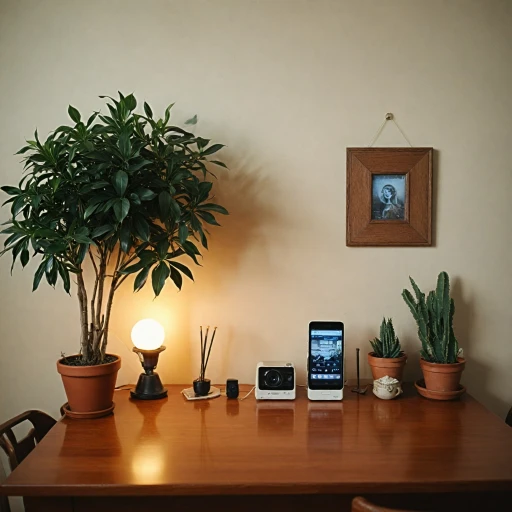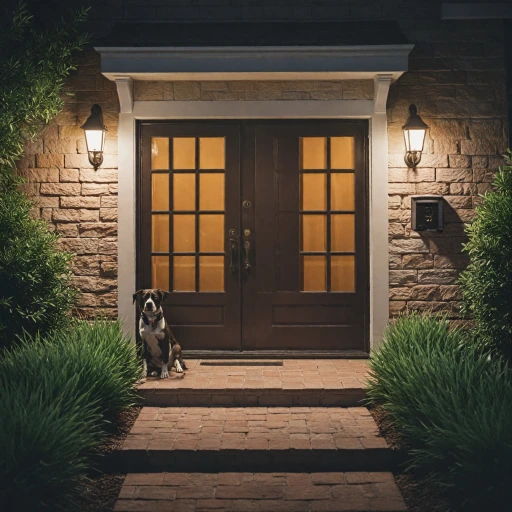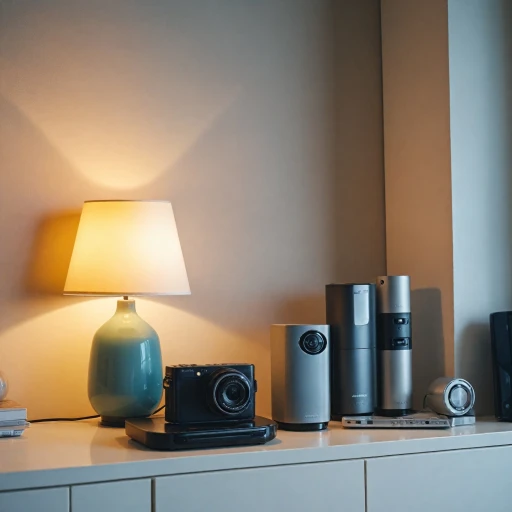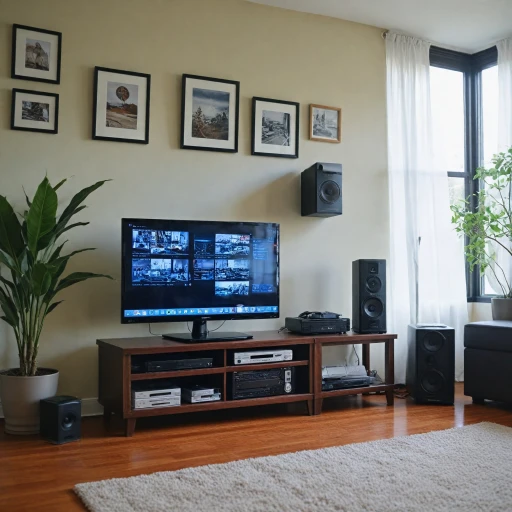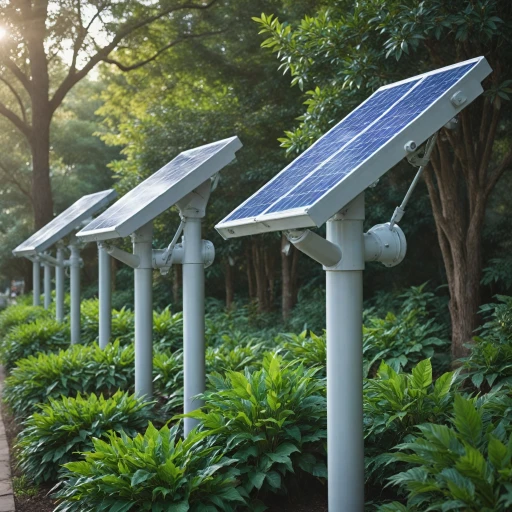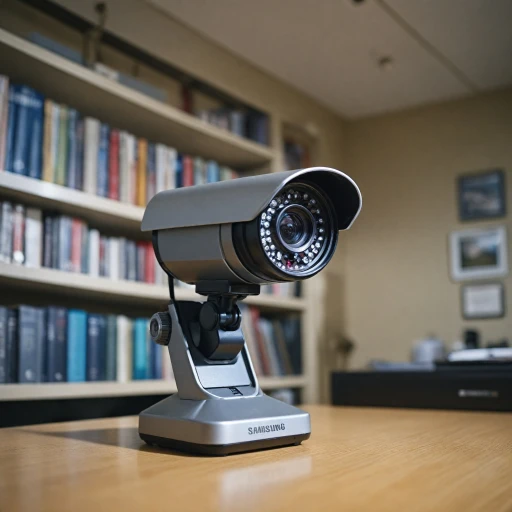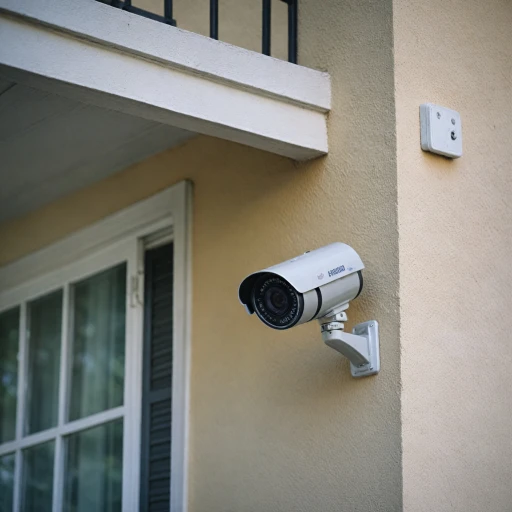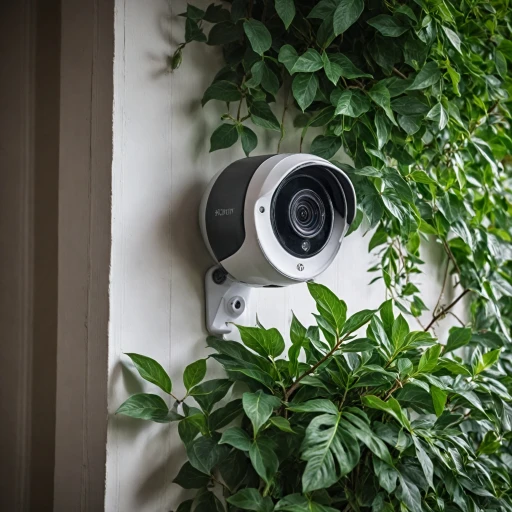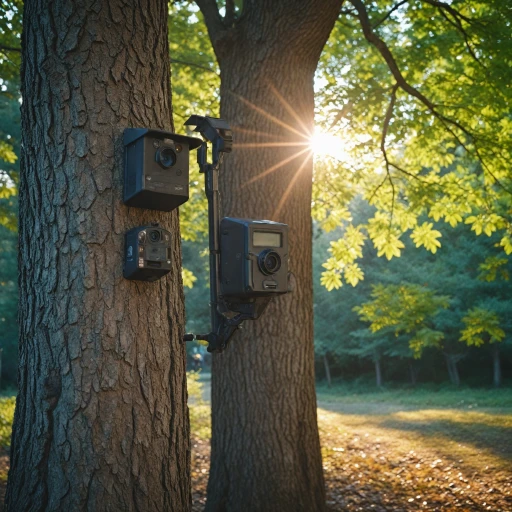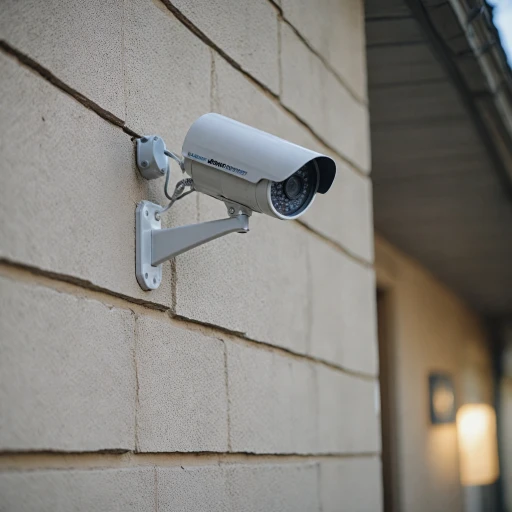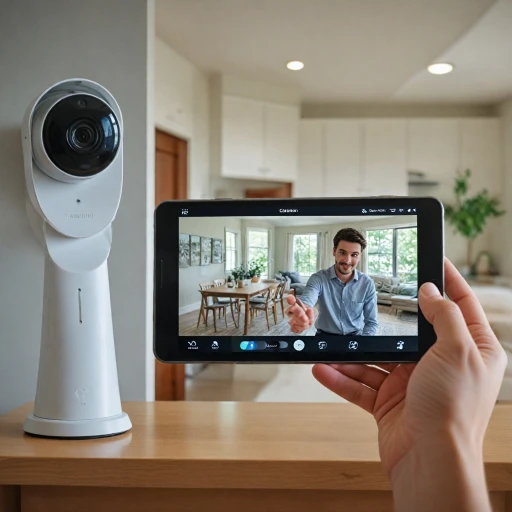
Understanding Different Types of Camera Mounts
Exploring Camera Mount Varieties: A Primer
When it comes to setting up your home security system, selecting the appropriate camera mount is as crucial as choosing the cameras themselves. The market is brimming with a variety of camera mounts, each offering distinct advantages depending on your specific needs. Here's a breakdown of the most common types of camera mounts you'll encounter:- Wall Mounts: These are perfect for affixing cameras to vertical surfaces. They're versatile and often come with a bracket and screw configuration to ensure stability.
- Ceiling Mounts: Ideal for positioning cameras on ceiling surfaces to provide a wide-angle view. They typically include an arm or ball design to adjust the camera’s angle easily.
- Pole Mounts: Use these for mounting cameras on existing poles or similar structures. They're often used for larger properties or outdoor setups.
- Clamp and Rail Mounts: These are more temporary but flexible options, allowing you to attach cameras to a variety of surfaces quickly and without permanent hardware.
- Tripod Mounts: For those needing a portable solution, tripod mounts offer mobility and flexibility, though they may not provide the permanent presence some setups require.
- Heavy Duty Mounts: Designed for larger cameras or those in high-wind areas, these mounts offer enhanced durability and strength.
Factors to Consider When Choosing a Camera Mount
Key Aspects to Weigh When Selecting a Camera Support
Choosing the right camera mount for your security system can make a significant difference in performance and longevity. The main considerations involve assessing your specific needs and comparing the options available. Here are crucial factors to keep in mind:
- Type of Mount: Consider whether a wall mount, ceiling mount, or pole mount fits best for your property layout. Some prefer the flexibility of a tripod mount, while others might opt for a rail mount or magnetic mount.
- Mounting Surface: Your chosen camera mount must be compatible with your installation surface, be it ceiling surface or a camera wall. Each surface has different mounting requirements.
- Load Capacity: Ensure the mount system can support the weight of your camera. A heavy duty mount is essential for bulky or high-value cameras.
- Adjustability: Look for mounts with adjustable arm or tilt head features that allow you to reposition the camera easily as needed. This includes ball and screw mount fixtures for flexible viewing angles.
- Weather Resistance: If your cameras are outdoors, select mounts with weatherproof materials to withstand various elements, ensuring durability.
- Price Point: Balance the price of the camera mount with the features it offers. Compare sale price versus regular price and the benefits each item provides.
For a comprehensive guide on enhancing your home security with a reliable camera wall mount, check out our dedicated article on this topic.
Installation Tips for Optimal Camera Placement
Ensuring Secure and Suitable Installation
When setting up your home security system, it's crucial to ensure that your camera mounts are installed correctly to maximize their efficiency. Here are a few tips and guidelines to follow when placing your cameras.- Select the Right Surface: Identify whether you are working with a wall, ceiling, or pole mount. Each option has its unique requirements. For instance, when using a wall mount or ceiling mount, ensure that the surface is stable and can handle the camera's weight.
- Use Appropriate Tools and Accessories: Depending on the mount type, you may need specific tools. For heavy-duty camera mounts, such as tripod mounts or pole mounts, you might require a drill for screws and a level to ensure symmetry. Adapt tools like clamps or universal camera adapters when dealing with atypical surfaces.
- Optimal Angle and Tilt: The correct angle is vital for comprehensive coverage. Many mounts, like ball head or tilt head, allow for adjustment. Consider a tripod mount or a wall bracket with tilt capabilities for adjustable views.
- Secure Fastening: Always use the right screws and tighten them adequately. Screw mounts and screw brackets are reliable; ensure these are properly affixed to prevent camera wobbling.
- Weatherproof Considerations: Use weatherproof mounts like heavy-duty or rail mounts outdoors. They withstand harsh conditions, protecting your camera and its mount system.
Weatherproofing and Durability Considerations
Ensuring Longevity in Various Weather Conditions
Choosing the right camera mount is only the beginning of safeguarding your security cameras from the elements. The durability and weatherproofing of camera mounts are essential for maintaining consistent performance, no matter the weather. To start, consider materials that are resistant to rust and corrosion. Metal mounts such as those with a protective coating can withstand rain and snow, making them ideal for outdoor use. If you're opting for plastic mounts, ensure they are UV-protected to avoid degradation from sun exposure. When opting for a camera wall mount or ceiling mount, check if it's compatible with your camera's housing for an added layer of protection. A well-suited camera mount system ensures that no elements infiltrate the camera body, further securing the device. For added protection, select mounts that offer options like tilt head and screw mount features, enabling you to adjust the camera's position to minimize exposure to direct rainfall or excessive sun. A universal camera adapter can help in integrating diverse cameras onto sturdy mounts like pole mounts or heavy-duty wall mounts, enhancing both security and longevity. Additionally, safeguard mounts near ceilings by ensuring they're properly sealed against ceiling surfaces to prevent moisture ingress. Clamp and rail mount systems can also offer flexible options for installing cameras in potentially less protected areas, ensuring the mounts fit snugly and securely to negate environmental impacts. Overall, compare available products for sale price benefits, but remember that a seemingly higher initial outlay for durable, weatherproof mounts can save costs in the long run by extending the life of your home security system.Common Mistakes to Avoid with Camera Mounts
Avoiding Pitfalls in Mounting Your Security Camera
When it comes to setting up camera mounts, there are a few common mistakes that can undermine the security system or lead to unnecessary expenses. Being aware of these can help ensure a more effective deployment of your surveillance cameras.
- Improper Mount Selection: It's crucial to choose the right camera mount according to the mounting surface and the weight of the camera. Selecting a light-duty clamp for a heavy camera can lead to stability issues, so consider a heavy duty wall or ceiling mount that can support the item securely.
- Neglecting Compatibility: Ensure the camera mount is compatible with your camera. Pay attention to mount systems such as screw mount or ball joint which may differ by model. Using an adapter may resolve compatibility issues, but confirm the adapter fits both the camera and mount.
- Ignoring Environmental Factors: Outdoor cameras should be paired with weatherproof mounts, especially on a wall mount or a ceiling surface. Failing to do so can shorten the lifespan of the equipment. Compare the weatherproof rating and durability before deciding on a camera mount.
- Overlooking Accessibility: Position the cameras where maintenance and adjustments are feasible without needing extensive equipment. A wall mount with an easy tilt head or arm can simplify angle adjustments.
- Wrongly Positioned Cameras: If not placed strategically, security cameras can have blind spots. Utilize mounts like tripod or pole mounts to enhance visibility. The right mount and strategic placement of cameras significantly boost home security while minimizing costs.
Avoiding these mistakes will help keep the camera system functional and ensure you're getting the best return on the price camera system installation entails.
Enhancing Security with Strategic Camera Mount Placement
Maximizing Coverage and Security Through Smart Mounting Choices
When considering where and how to mount your security cameras, strategic placement is key to enhancing the security of your home. By selecting the appropriate camera mounts, such as a wall mount, ceiling mount, or pole mount, you can ensure optimal coverage of vulnerable areas. Here's how to make the most of your mounting options:- Identify High Traffic Areas: Focus on placing cameras in locations that often see movement, like entryways, driveways, and common pathways. A well-placed wall mount or ceiling mount can offer a broad field of view, allowing you to monitor these critical zones effectively.
- Utilize Different Mount Types for Maximum Flexibility: Different mounts, such as a tripod mount, ball arm mount, or even a rail mount, offer varying angles and stability. By comparing these options, you can choose the one that provides the best coverage for each specific area. For example, a tilt head can add versatility to your coverage, allowing you to adjust the camera's field of view as needed.
- Consider Adjustable and Universal Mounts: Flexible mounts, such as those with a universal camera mount system or a clamp mount, can make adjusting the camera position easier. These can be ideal for areas that may require frequent angle adjustments due to changing conditions or security needs.
- Strategic Use of Heavy Duty Accessories: For outdoor surveillance, heavy-duty mounts are essential to withstand elements and deter tampering. Opt for mounts with accessories like a secure screw mount or an adapter to strengthen the installation.

